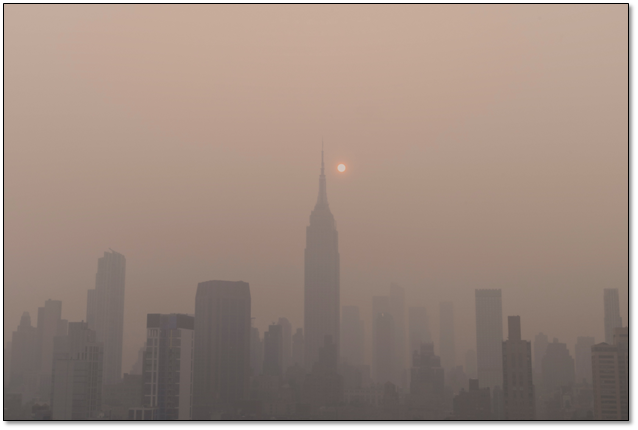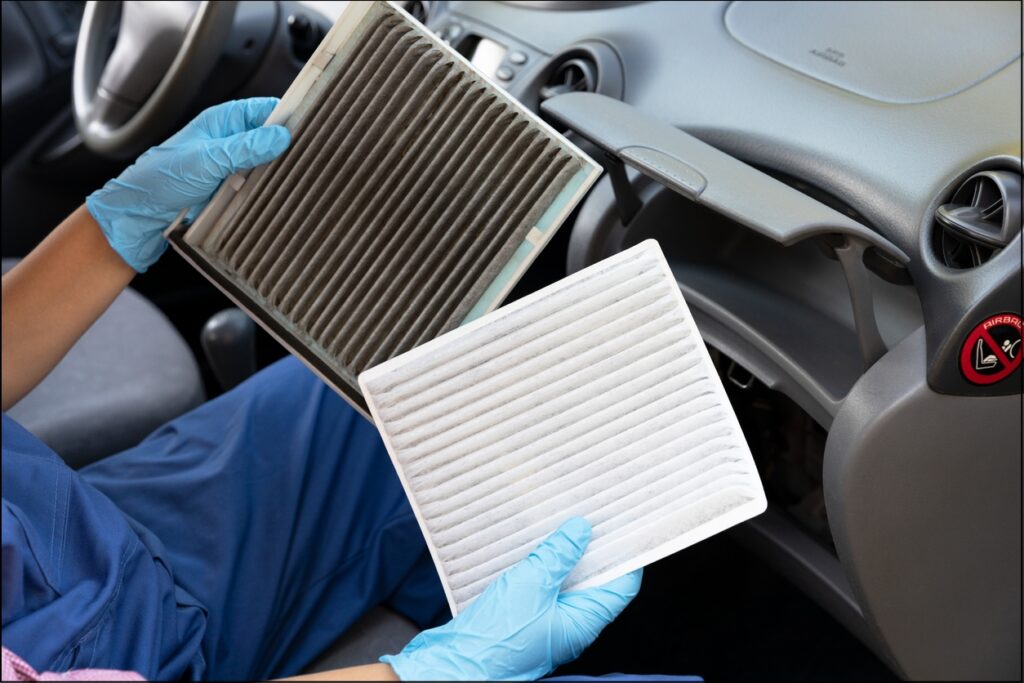| By Chilton Staff |
Fall is a time when nature’s beauty can be at its peak. But did you know that smoke from last summer’s wildfires can still impact your visibility in your vehicle?
For millions of people across the United States this summer, wildfires darkened skies and interfered with clean breathing and visibility.
Memories of this summer’s wildfires and smoky skies may be in the rearview mirror now, but if you were affected by smoke from fires and haven’t replaced your vehicle’s cabin air filter, it’s still recycling remnants of summer smoke inside the car. Some experts recommend air purifiers, but did you know that many vehicles have a built-in filter to clean the air inside the car? It’s important to change these filters to keep the air fresher, the interior cleaner, and the windows fog-free.
Most vehicles built in the last 20 years have at least one filter designed to clean outside air as it enters the interior. The filter is usually a folded material that resides in a tray, often behind the glove compartment. As incoming air passes through the filter, everything from larger debris like leaves and twigs to tiny particles can become lodged in it—preventing it from entering the cabin. But as the filter becomes full of contaminants, these can spill into the air you and your passengers breathe. This can lead to odors inside the car and can cause trouble for people with respiratory issues.
In cold or wet weather, a dirty cabin filter can lead to fogged windows, making it harder to see. A clean cabin air filter helps keep the interior of the car free of dust, including the windshield. It also helps prevent moisture buildup inside the vehicle. A dirty air filter can impede the free flow of air in the vehicle’s ventilation system. When the air inside the vehicle is dirty, moist, and/or not flowing freely, condensation can form on the inside of the windows. This fog can reduce visibility, especially in winter weather.
There are a couple other issues caused by a dirty cabin air filter. Lack of ventilation can decrease the performance of the heater and air conditioner, and place added strain on the blower motor. The blower motor could fail prematurely. A clogged filter can also lead to noises, such as rattles, coming from the vents.
Replacing the cabin air filter is often one of the easier maintenance tasks you or a mechanic can do. A clean filter improves the interior air for you and your passengers while helping keep the inside of your windows cleaner.
You might be surprised when you compare a dirty filter to a new one, as in the image below.
Check the automaker’s vehicle maintenance schedule recommendations about when to change the filter. You’ll notice that if the vehicle has been driven under severe conditions, such as on dusty roads or in wildfire smoke, the automaker recommends more frequent checks.
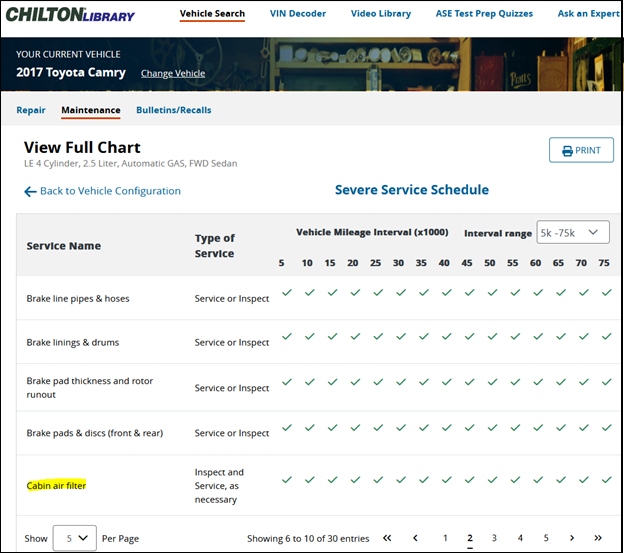
Look for information about the cabin air filter in the vehicle owner’s manual or in ChiltonLibrary. If you’re missing the owner’s manual for your vehicle, download a PDF at the automaker’s website.
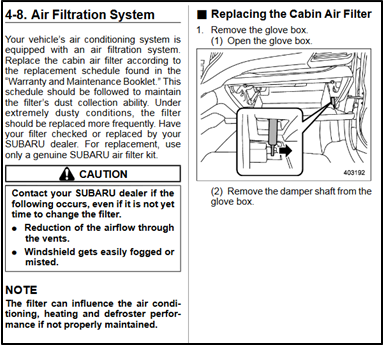
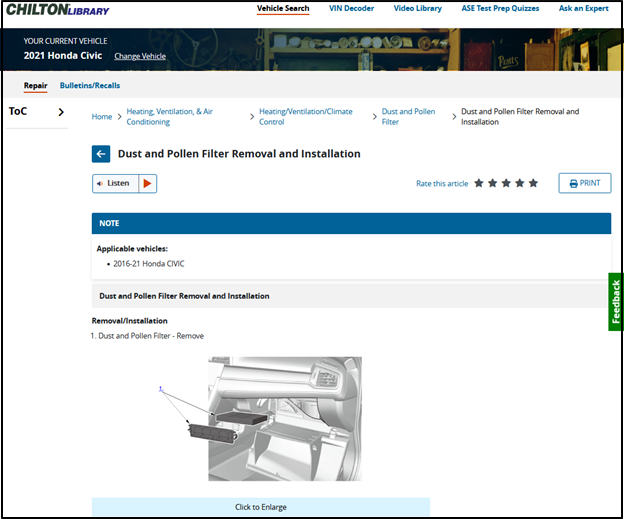
Simply replacing a dirty filter can make a big difference. A clean filter improves air quality for you and your passengers and lets you experience autumn’s spectacular scenery with crystal-clear visibility.
Need ChiltonLibrary for your patrons? It’s a breeze to contact us to subscribe or request a free trial.


